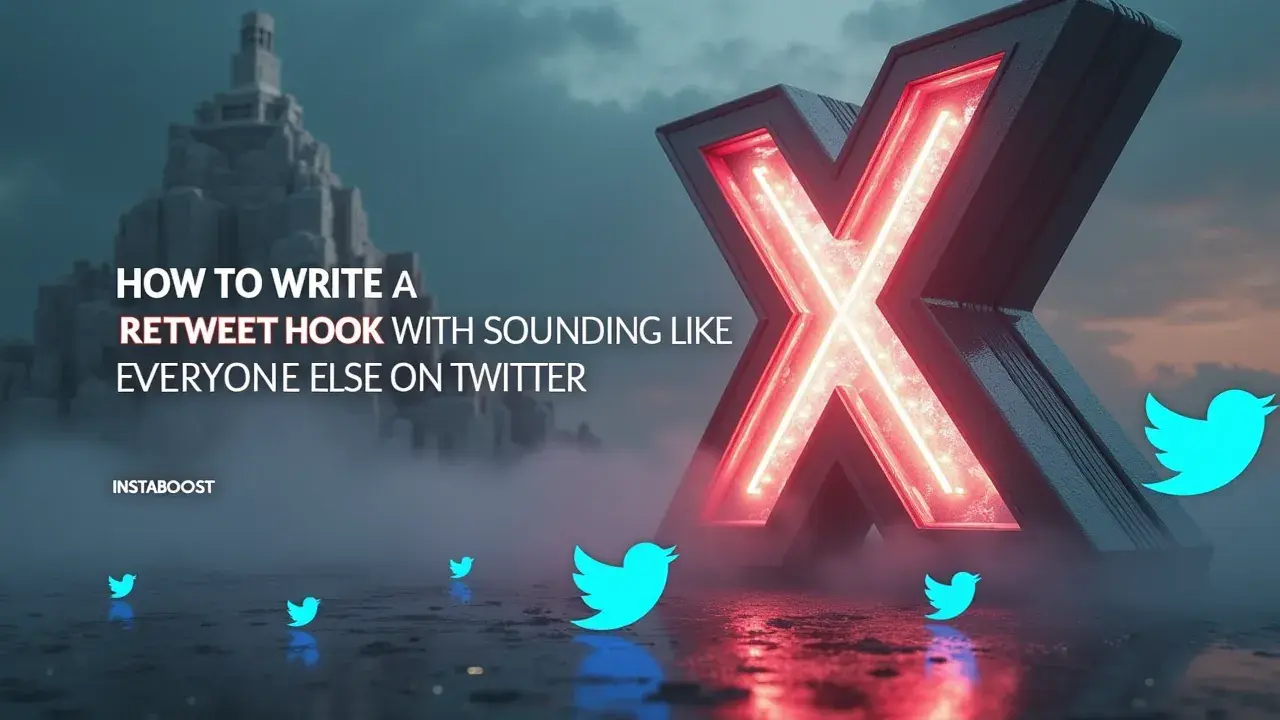How To Write a Retweet Hook Without Sounding Like Everyone Else on X (Twitter)?
Originality comes from clarity, specificity, and a distinct point of view. Hooks work best when they set a sharp expectation, avoid clichés, and offer a concrete payoff aligned with the tweet’s substance. Overused formats can feel generic, but reframing with precise context, unexpected details, or a concise contrast makes shares more likely and relevant. Aim for tight language and a clear benefit to stand out and earn meaningful retweets.
Why Most Retweet Hooks Fall Flat
Spend a little time scrolling through Twitter and you’ll see a pattern in how people try to get attention. Most of the retweet hooks sound alike – things like “you won’t believe…” or quick promises about what you’ll learn. After a while, they all start to blur together. These lines are supposed to help posts get noticed, but because so many people use the same approach, they can end up making everything less interesting.
Even tweets with good points or real stories can disappear into the noise. If you’re hoping for more than a quick bump in likes – if you want people to actually talk about your ideas or remember you – it helps to notice why these templates are everywhere, and whether they’re actually working. Most of them are just copying things that used to get a lot of attention, but people catch on pretty fast.
There are whole guides out there now, some breaking down X promotion made simple as a formula, but the retweet hooks that work best usually come from thinking about what you really want to say, and who you’re talking to, instead of trying to hack the system.
If you spend a bit of time figuring out what actually matters to your readers, and let yourself communicate that clearly, you end up with something that people are more likely to stop and listen to, even if it’s not flashy. There’s something to be said for caring about the message itself, not just the reaction it might get.
If you spend a bit of time figuring out what actually matters to your readers, and let yourself communicate that clearly, you end up with something that people are more likely to stop and listen to, even if it’s not flashy. There’s something to be said for caring about the message itself, not just the reaction it might get.

Why Sharper Positioning Builds Instant Credibility
It isn’t really about putting out more tweets or threads; it’s more about recognizing when you have a specific, useful point to make. When you see a post that actually makes you stop scrolling, it usually isn’t because the writer is dangling some secret or pushing the same formula that everyone else is using. It’s more that they’ve spotted something in plain sight and managed to explain it in a way you hadn’t considered before. On Twitter, people seem to respond to clear thinking – something straightforward and honest – rather than the kind of stuff that’s engineered to get clicks. The accounts I end up following over the long run aren’t the ones trying to pack every thread with hot takes or urgency.
Instead, it’s the ones that have a steady point of view and share it without a lot of fuss. When someone opens a thread by showing they actually understand the details behind a trending topic, or they offer an angle that feels original but not forced, you can tell. Those are the takes you remember, the ones you want to hear more from.
And over time, the people who get their posts passed around most are usually the ones who have earned it by putting out ideas that stick – not just because they’re catchy, but because someone else wants to add to the conversation or rethink something they thought they understood. Influence on Twitter isn’t really about the numbers on a single tweet; it’s more about whether your thoughts show up in the way others talk about things later on. That seems to come less from chasing attention and more from honestly laying out why something matters or how you see it fitting into a bigger picture. There are plenty of strategies out there for those wondering how to get more followers on X, but it’s a different kind of presence when someone is just sharing what they genuinely notice – and, honestly, it’s easy to spot when someone is doing it for real.
Frameworks: The Art of Substance Over Gimmick
Lately, I’ve found myself thinking less about funnels and more about frameworks. Funnels always felt like pushing people through a set order – grab attention, tease something, get the click. That might be why so many posts and hooks on Twitter start to blur together and don’t really leave much of an impression. Frameworks seem different. They’re more about coming back to the same ideas, looking at them from different sides, and gradually getting a better handle on them. When I use a framework, I’m not chasing some clever line or gimmick.
I’m just trying to notice what’s actually happening, what I’m learning, and whether I can lay that out in a simple way. Instead of trying to sell some new “secret” or shortcut, I might just point out a pattern I’ve noticed, or talk about something that worked – or didn’t – in what I’m doing. Each post ends up being another piece, not just a separate shot at getting attention. There’s a lot of focus on quick wins – like how to order Twitter hearts – but after a while, you can tell when someone’s working out their own approach instead of just recycling what’s already popular.
It’s less about trying to impress and more about showing how you think things through. That’s what actually makes me want to keep up with someone – not because they’ve got some big answer, but because it feels like they’re sharing how they see things. In a space where so many people use the same methods, it’s frameworks that start to feel a bit different, even if they take more time to come together















